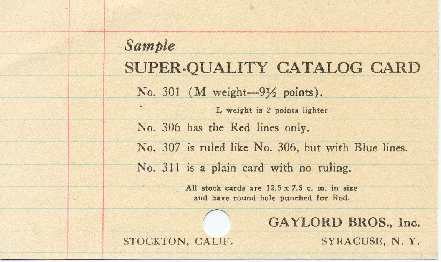https://www.ebay.com/itm/116060316468
2024-02-06 Gaylord Bros. modular 3 piece card catalog with 15 drawers (5x3), table, and top offered for bidding at $500 with a buy it now of $2,000. Local pick up only from Franklin Square, NY.
In pretty dreadful condition, mismatched drawers, wood and metal with plastic trays in drawers instead of wood. Heavy water damage to stain/finish on the top.

Cost per drawer:
- minimum auction price of $500: $33.33
- buy it now price of $2,000: $133.33
I suspect this won't sell for quite a while at this price and in this condition.

 available at
available at 





